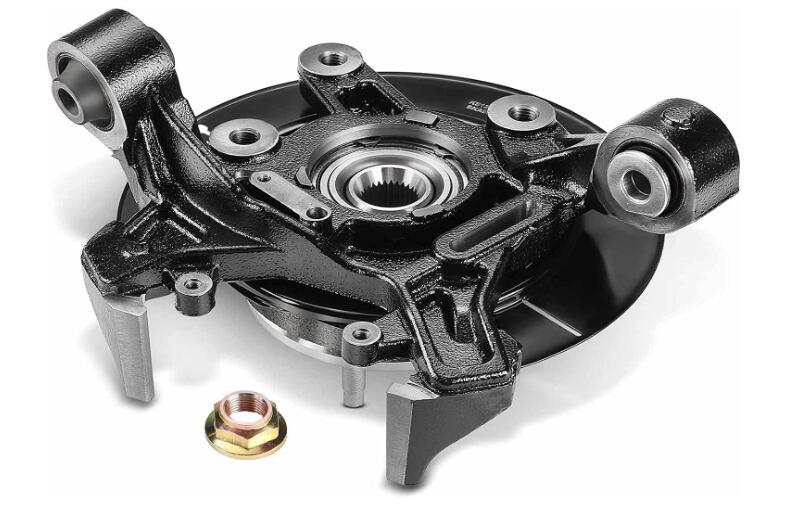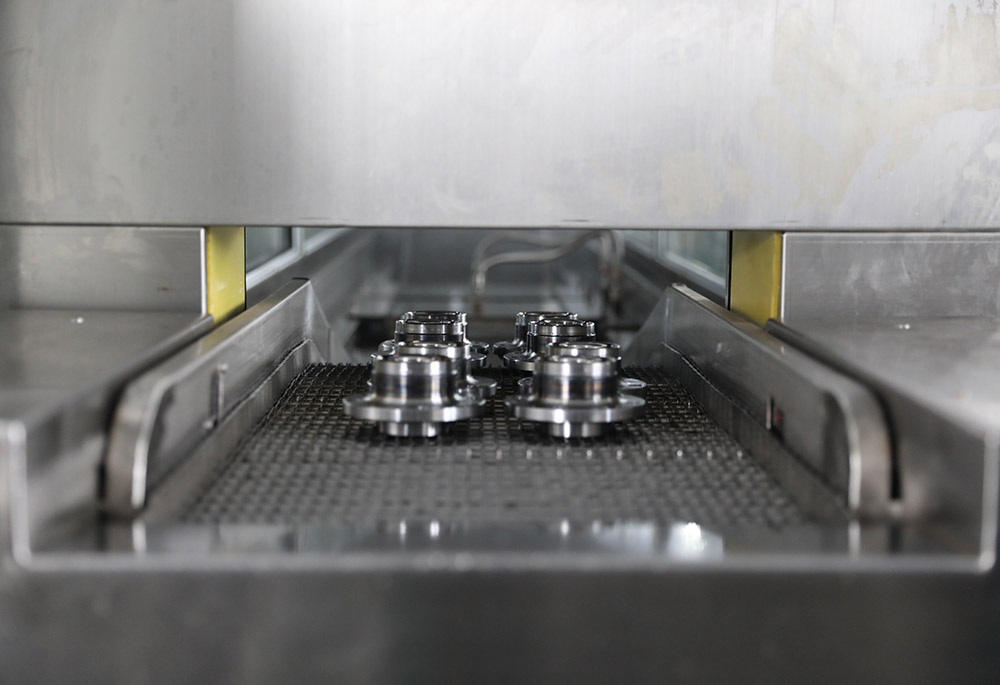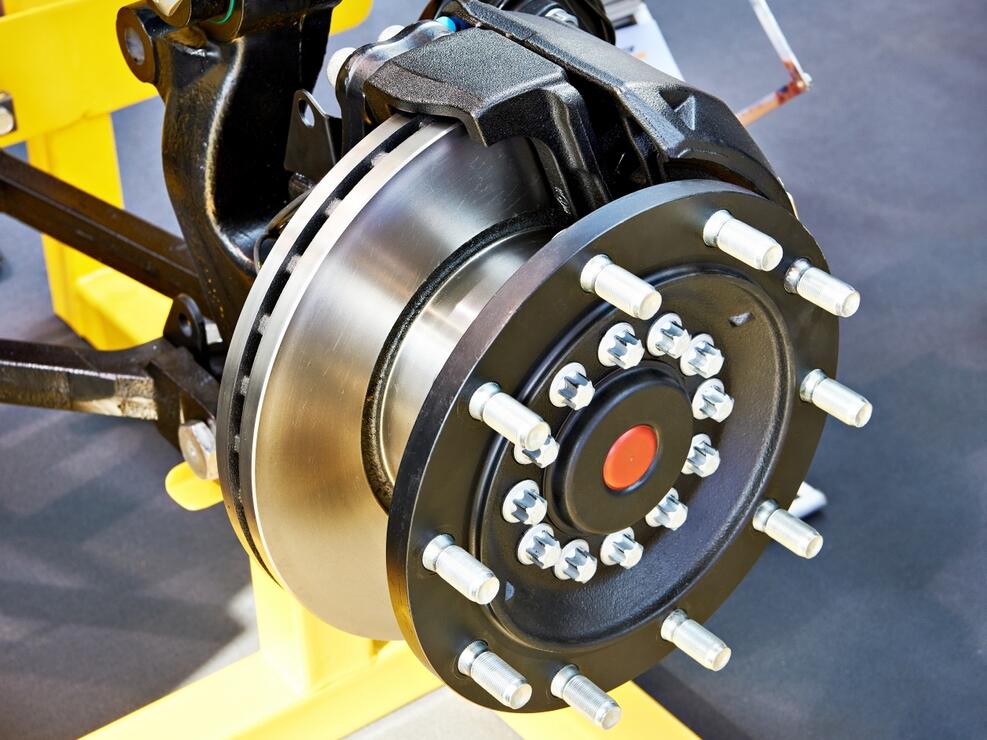Introduction
Wheel hub assemblies play a crucial role in the automotive industry.
Ensuring smooth and controlled wheel movement is integral to the safe operation of all vehicles, from compact passenger cars to heavy-duty commercial trucks.
This article delves into the economic impact of wheel hub assembly production on the global automotive market.
The Importance of Wheel Hub Assemblies
Wheel hub assemblies are critical components of any vehicle.
They house the wheel bearings, allowing for frictionless rotation of the wheels, and they provide a mounting point for the brake disc and wheel itself.
A vehicle’s efficiency, performance, and safety greatly depend on the quality of these assemblies.
As such, the demand for high-quality wheel hub assemblies is high and consistent, which drives their global market growth.
A 2023 report from Grand View Research revealed that the global automotive wheel hub assembly market is expected to reach $10.3 billion by 2026, growing at a CAGR of 5.1% from 2022.
This growth can be attributed to rising worldwide vehicle production, the increasing demand for lightweight components to enhance fuel efficiency and wheel hub assembly technologies advancements.
Economic Impact of Wheel Hub Assembly Production
The production of wheel hub assemblies has a profound economic impact on the global automotive market.
This impact is not only limited to the revenues generated from their sales but extends to the numerous jobs created in their production, distribution, and maintenance.
Additionally, the taxes accrued from these activities contribute significantly to the economies of countries where these manufacturers operate.
Furthermore, the rise in the production of wheel hub assemblies supports ancillary industries like raw material suppliers, logistics and transportation, and the aftermarket services sector.
In countries like China, Germany, and the USA, which host some of the world’s largest auto manufacturers, wheel hub assembly production is vital to the national economy.
Technological Advancements and Their Economic Implications
Technological advancements in wheel hub assemblies, such as integrated wheel end (IWE) systems and hub bearing units with active sensors, are driving the market growth.
These advancements contribute to the overall economic impact in several ways.
For instance, the R&D activities in creating these advanced products create jobs and foster innovation.
The resulting products often command higher prices in the market, generating additional revenues.
They also help create safer, more fuel-efficient, and more comfortable vehicles, promoting the growth of the automotive sector.
Globalization and the Wheel Hub Assembly Market
Globalization has had a significant impact on the wheel hub assembly market.
It has expanded the geographical reach of manufacturers and facilitated the sourcing of materials and components from different parts of the world.
This global supply chain contributes to economic activity in various countries and creates a more competitive market environment.
However, globalization also poses challenges like the need for regulatory compliance across different countries and vulnerability to global economic fluctuations.
For instance, the COVID-19 pandemic caused significant disruptions in the global supply chain of wheel hub assemblies.
Despite these challenges, the global market for wheel hub assemblies continues to grow, supported by the recovery of the automotive sector.
Sustainability and the Wheel Hub Assembly Market
In recent years, sustainability has become a crucial consideration in the automotive industry.
This shift towards eco-friendly practices also influences the wheel hub assembly market, with economic and environmental implications.
Manufacturers are increasingly adopting sustainable practices such as using recycled or renewable materials, minimizing waste, and optimizing energy use in production processes.
These practices not only help in conserving the environment but also make economic sense.
They can lead to cost savings in the long run and enhance a company’s reputation, opening up new market opportunities.
Moreover, regulations are being tightened worldwide to reduce the environmental impact of automotive manufacturing.
Compliance with these regulations often necessitates investment in new technologies and practices, driving economic activity in these areas.
Non-compliance, on the other hand, can lead to penalties and reputational damage.
The Aftermarket for Wheel Hub Assemblies
The aftermarket for wheel hub assemblies is another crucial factor contributing to their economic impact.
Since wheel hub assemblies require replacement over time, there is a significant demand for these components in the aftermarket.
The aftermarket sector does not just contribute to sales of wheel hub assemblies but also to services associated with their installation and maintenance.
It, therefore, creates jobs and generates revenues in these areas, further increasing the economic impact of wheel hub assembly production.
Future Outlook
The wheel hub assembly market is likely to continue its growth trajectory.
The increase in global vehicle production, technological advancements, and a move towards more sustainable practices are expected to be critical drivers of this growth.
At the same time, challenges such as supply chain disruptions, regulatory compliance, and global economic fluctuations need to be navigated.
Given the significant economic impact of wheel hub assembly production, stakeholders across the automotive industry should keep a close eye on market trends.
This includes OEMs, aftermarket players, raw material suppliers, and policymakers.
By staying informed and adapting to changes, they can seize opportunities and contribute to the growth of this vital market segment.
Influence of Electric Vehicles on the Wheel Hub Assembly Market
The global shift towards electric vehicles (EVs) is another critical factor shaping the wheel hub assembly market.
With different mechanical requirements than traditional internal combustion engine vehicles, EVs demand distinct wheel hub assembly designs and materials to accommodate unique attributes, such as high torque at low speeds and significant vehicle weight due to the battery systems.
From an economic perspective, the proliferation of EVs presents a substantial opportunity for wheel hub assembly manufacturers.
It will likely spur the demand for innovative products, driving research, development, and manufacturing facilities investments.
These investments, in turn, contribute to economic activity and job creation.
However, the rise of EVs also presents challenges for manufacturers.
The high performance and quality demands of EV wheel hub assemblies require sophisticated production techniques and higher-quality materials, which can increase production costs.
Also, as the EV market is highly competitive and fast-evolving, manufacturers must keep pace with rapid technological advancements to stay relevant.
The Role of Government Policies and Regulations
Government policies and regulations also significantly impact the wheel hub assembly market.
These can range from safety and quality standards that manufacturers must meet to import-export regulations that impact global trade.
Governments worldwide are also implementing policies to promote environmentally friendly vehicles, indirectly influencing the wheel hub assembly market.
For example, many governments offer incentives for EVs, driving their sales and, consequently, the demand for EV-specific wheel hub assemblies.
Similarly, regulations around vehicle emissions are encouraging the development and use of lightweight components, including wheel hub assemblies, to improve fuel efficiency.
From an economic standpoint, these policies can both challenge and benefit businesses.
On the one hand, they may necessitate investments in new technologies or processes to comply with regulations.
On the other hand, they can open up new market opportunities, such as the growing EV wheel hub assemblies market.
Implications for Stakeholders
As detailed throughout this article, the economic impact of wheel hub assembly production is wide-ranging and multifaceted.
Understanding these implications is crucial for stakeholders involved in this industry to make informed business decisions and anticipate future trends.
For Manufacturers
Manufacturers of wheel hub assemblies are at the forefront of these economic dynamics.
The rise of electric vehicles, the drive for sustainability, and evolving government policies all present challenges and opportunities for these businesses.
Manufacturers must invest in research and development to stay competitive and capitalize on market opportunities.
They should aim to innovate and offer high-quality, reliable wheel hub assemblies that meet the specific requirements of different vehicle types, including electric and hybrid vehicles.
Moreover, sustainable manufacturing practices are becoming a competitive advantage in the automotive industry.
Thus, manufacturers that can reduce their environmental footprint while maintaining high-quality standards will likely stand out in the market.
For Automotive OEMs
Automotive OEMs must also keep abreast of trends in the wheel hub assembly market, as these components play a crucial role in vehicle performance and safety.
The choice of wheel hub assembly can impact several critical areas, from fuel efficiency to noise, vibration, and harshness (NVH) levels.
As the move towards electric vehicles accelerates, OEMs will need to work closely with wheel hub assembly manufacturers to ensure their components meet the specific requirements of EVs.
For Policymakers
For policymakers, understanding the economic impact of wheel hub assembly production can inform policy decisions.
This includes regulations around safety and quality standards, incentives for electric vehicles, and measures to promote sustainable manufacturing practices.
Conclusion
In summary, the production of wheel hub assemblies plays a crucial role in the global automotive market.
Its economic impact extends beyond direct revenues from sales to influence job creation, technological innovation, sustainability efforts, and more.
Understanding these economic dynamics becomes increasingly essential as this market continues to evolve.
For manufacturers, automotive OEMs, policymakers, and other stakeholders, staying informed of these trends can aid strategic decision-making and contribute to the growth and prosperity of the automotive industry.
As we look to the future, the wheel hub assembly market will remain a key player in the global economy, its influences radiating out to touch myriad industries and sectors, shaping and being shaped by the relentless drive of human innovation and progress.




